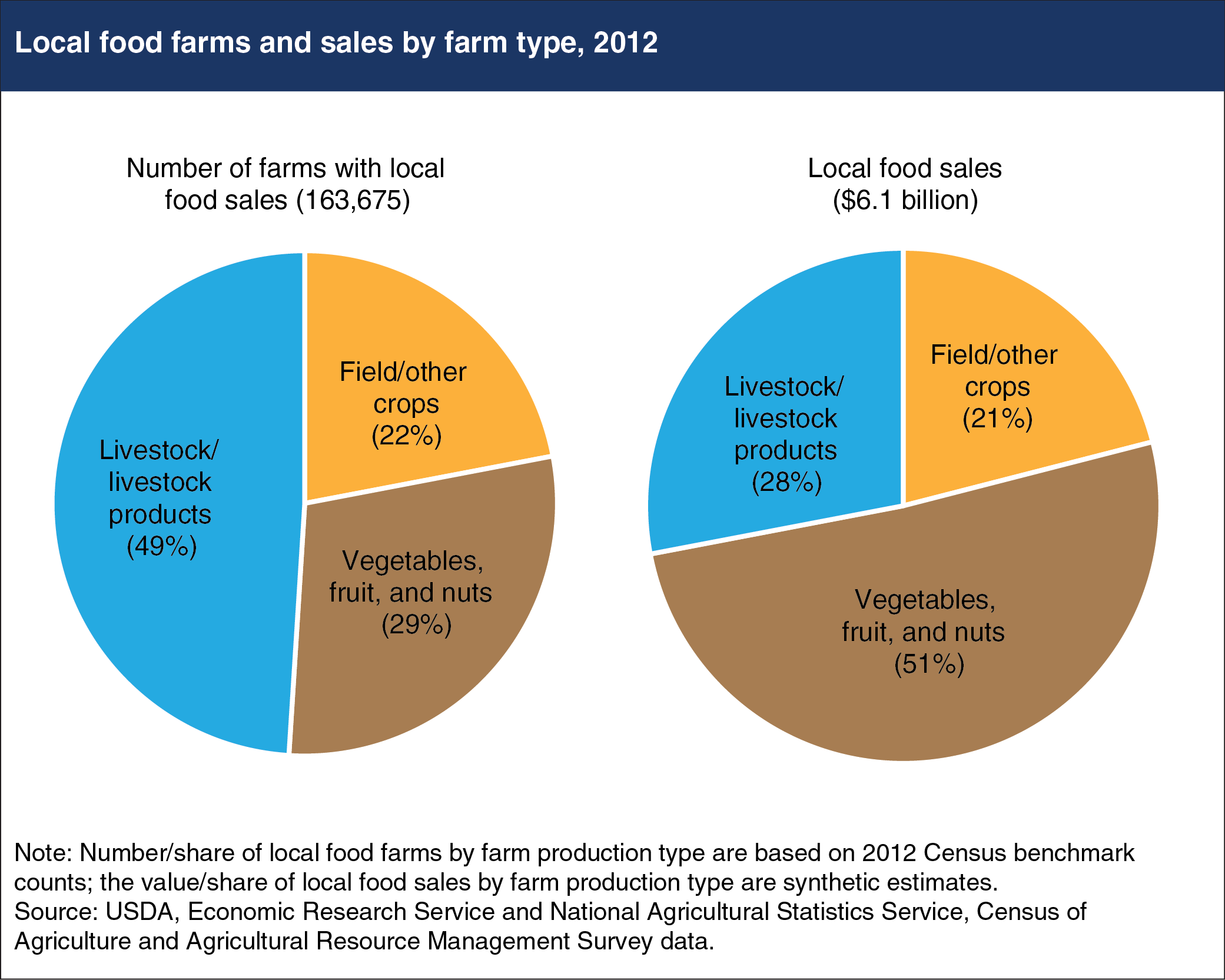Produce farms account for about half of all local food sales
- by Stephen Vogel
- 6/5/2015

In 2012, 34 percent of all U.S. produce farms—those producing vegetables, fruit, or nuts—sold food through local food marketing channels, whereas only 3 percent of field/other crop farms and 8 percent of livestock/livestock product farms did so. The nearly 48,000 produce farmers with local sales in 2012 represented 29 percent of all local food farmers but generated $3.1 billion, or 51 percent of all local food sales. Farmers have two main channels through which to sell their food locally: directly to consumers (at farmers' markets, roadside stands, farm stores, etc.), and through intermediated marketing channels (defined to include sales to grocers, restaurants, schools, universities, hospitals, and regional distributors). Among local food farmers who elected to sell through direct-to-consumer outlets, intermediated marketing channels, or a mixture of both, produce farmers generated higher local food sales per farm than did field/other crop farms or livestock/livestock product farms. This suggests that opportunities to market locally are important to produce farmers, and their disproportionate presence (through local food sales) shapes the profile of a typical local food farm. This chart is found in the ERS report, Trends in U.S. Local and Regional Food Systems: Report to Congress, January 2015.

